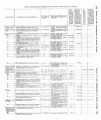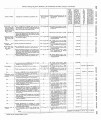| Title |
Annual Report of the Commissioner of Indian Affairs - 1870 |
| Subject |
Indian reservations; Federal government; Indians of North America; Allotment of land; Land use; Indians of North America--Education; Water rights; Irrigation; Annuities; Education; Religion; Indigenous peoples--North America |
| Keywords |
Annual Report; Indian Agency; Reservations; Allotment; Land Rights; Tribal Funds; Inter-tribal Relations; Resources; Native Americans |
| Publisher |
Digitized by J. Willard Marriott Library, University of Utah |
| Tribe |
Ute; Shoshone; Paiute |
| Language |
eng |
| Description |
Excerpts concerning Utah from the Annual Report of the Commissioner of Indian Affairs - Courtesy of the University of Wisconsin Digital Collections. The Commissioner of Indian Affairs claims that there is room for improvement in the relationship between the Utes and the federal government. The Utah Indian agent reports on the agricultural pursuits of the various tribes, relations between Indians and white pioneers, and the status of Utah's Indian education system |
| Type |
Image/StillImage |
| Coverage |
Washington (D.C.) |
| Format |
application/pdf |
| Rights |
Digital Image © 2011 America West Center. All Rights Reserved |
| ARK |
ark:/87278/s6bw0c95 |
| Creator |
Commissioner of Indian Affairs; Parker, Ely Samuel, 1828-1895 |
| Date |
1870 |
| Spatial Coverage |
Utah; Colorado; New Mexico; Washington (D.C.) |
| Setname |
uaida_main |
| ID |
368862 |
| Reference URL |
https://collections.lib.utah.edu/ark:/87278/s6bw0c95 |



























